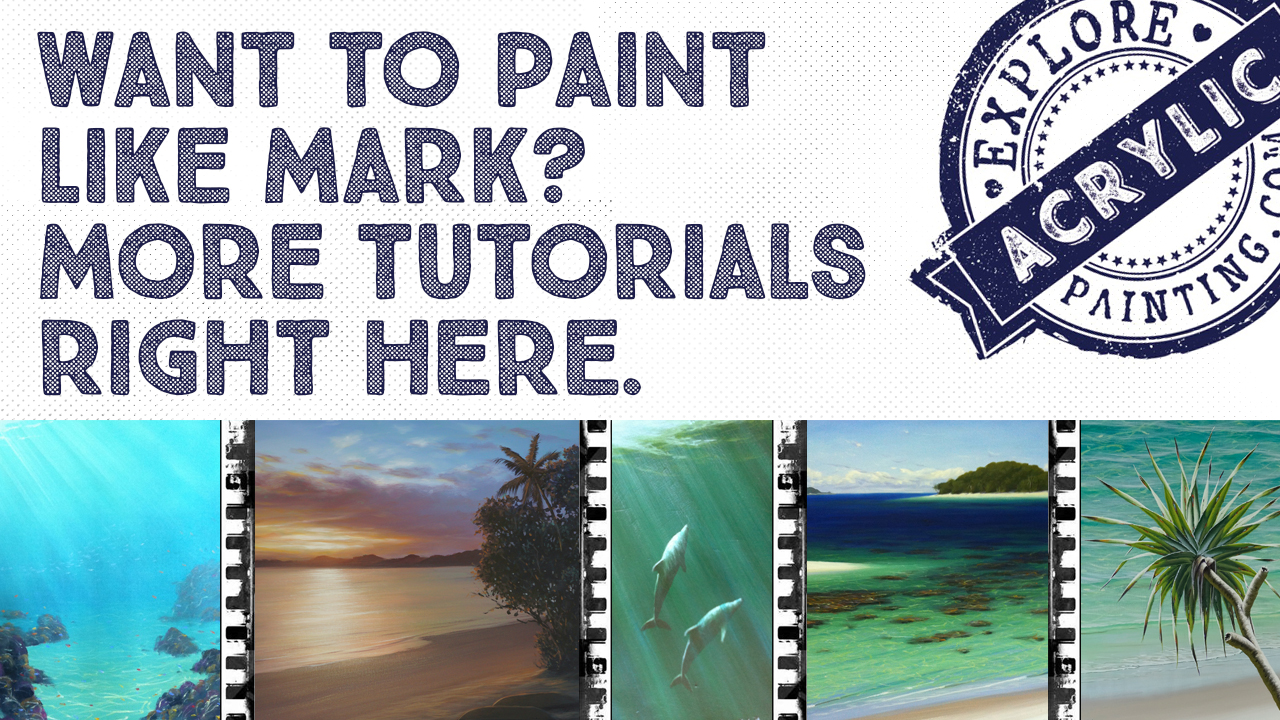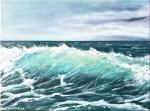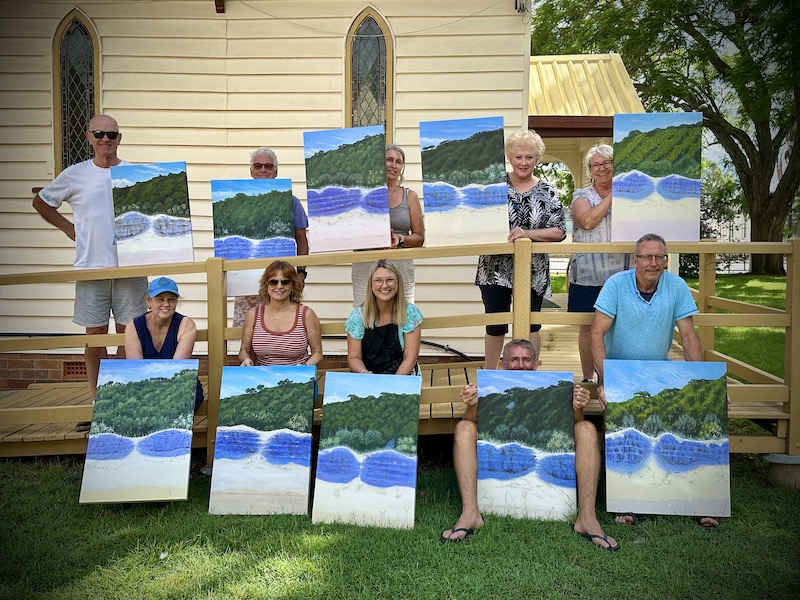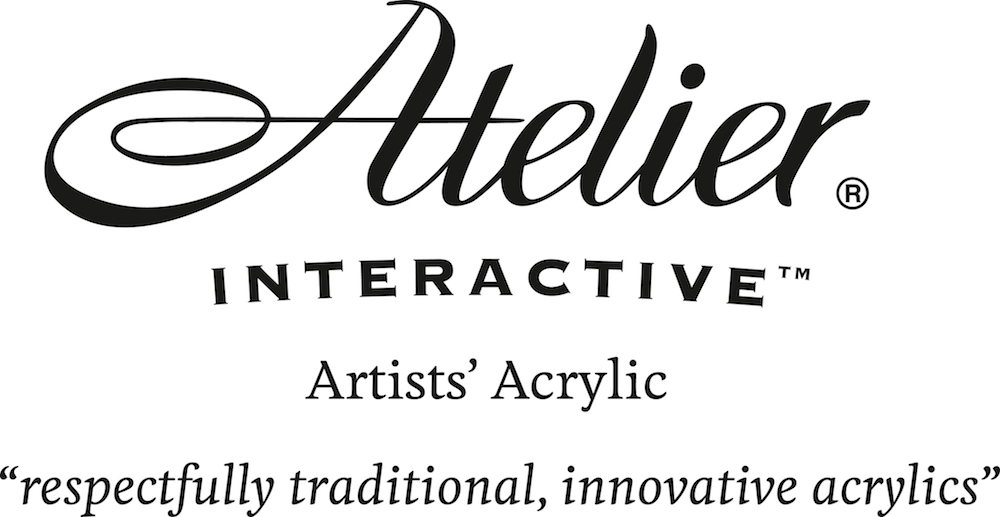Your Painting Surface. Just What You Chuck Paint At? Or...
Merely a painting surface?
Or something to add dimension and interest?
Let's explore.
You may think a painting surface is just something you chuck your paint at, but……..it can be so much more.
What you paint on can make a huge difference to the finished painting. Investigating all the different painting surfaces is one of the fun things about making paintings.
Rough, smooth, patterned, or textured; these surfaces can not only completely change the "feel" of your painting, they can completely change the way you make your painting.
Before we go into the all the possibilities there is probably one major thing to consider:
How long do you want your paintings to last?
If you are only interested in poking around with paint and don't want to bequest your paintings to humanity, then ignore this next little bit. Paint on whatever you want, with whatever you want.
If you want them to last a while, then read on.
Everything breaks down eventually. The trick is to buy products that will last as long as possible; or somehow preserve a poor surface to avoid deterioration for as long as possible.
There are a range of excellent pre-primed boards with wonderful smooth surfaces, or dozens of canvas products that make a great foundation for your paintings.

Price is, unfortunately, a reasonable way of deciding quality.
The pre-prepared products will save you some time if you are happy to spend the money.
If not, fortunately there are plenty of very cheap products that will do the job. Just don't sell them for thousands of dollars (they hurt just as much as the expensive ones when an angry client strikes you with the rotten/stained/warped artwork two months later).
You can prepare your own board. Remember though if conservation is a concern you will need to seal the material properly. MDF (Medium Density Fibreboard) is not recommended. It is not stable. Masonite is fine, providing it is prepared properly.

The great thing about it is that it is often thrown out by hardware stores (it is often used as packing between doors, panels etc.)
In my part of the world the currency for collecting this waste is a few beers. Excellent value. Make sure you seal it first (not with beer).
A couple of coats of PVA glue (a foam roller works well) or even better, a purpose built sealer such as Atelier Binder Medium will lock in all the tannins. (Tannins can bleed through your painting and eventually stain it irrevocably). The conservators at the Louvre will be very upset.
So now that we have all the techy stuff out of the way, its time to get to the fun bit, creating a painting surface which makes painting easier and more interesting.
Let's look at different surfaces and see how our paintings can benefit from them.
| Toothy Painting Surface |
|---|
Some watercolor papers can be very coarse.
So can some woven canvas surfaces. If a very loose approach is your style then this can be great. The high spots in the surface will pick up the colour.

This is a fantastic way of suggesting detail (no point in doing work unnecessarily). The down side is that the paint doesn't "slide" the same way it does over a smooth painting surface. A coat of gloss medium or binder medium can help, particularly with very porous surfaces.
Glazing can also be harder because your medium will drop into the "holes" between the weave. This can make it a little harder to control. I love painting using big luscious blobs of pigment, wet on wet on a toothy surface. The good news is that a rough painting surface is perfect for a rougher approach.
Don't forget, you don't have to settle for the surfaces that are on sale. You can have a wonderful time creating your own designer surface.
Painting a surface thickly with gesso allows you to create all sorts of texture. Drag your brush strokes all in the same direction in the thick gesso and paint a rainy day. The brush strokes in the surface will add to the impression.
Consider impressing leaves, or coins, or lace or……??? into the paint and work an abstract painting over the top of the indentations.
Impasto gel will give even better build.
Consider also that your surface does not have to be gesso. Old news articles torn up (and properly sealed with a binder medium), glued onto the surface is a great way of making a statement. It also leaves a lovely texture to paint on. Lots of fantastic ways of saying what you want. The sky is the limit.
| Smooth Painting Surfaces |
|---|
Smooth surfaces lend themselves beautifully to a realistic approach to painting. I love painting figures and fabric on smooth painting surfaces. The paint slides easily. Brushstrokes can be eliminated or softened, subtle gradations of colour can be blended wonderfully and the illusion of depth and dimension rendered with less effort. Verrry satisfying.

Glazes spread gloriously on a smooth surface and sit as a thin film over the painting, without it settling into the grain of a coarse surface.
You decide what a smooth surface is. Some subtle brushstrokes in the primer/gesso is still a smooth surface but adds a little interest as a bonus. A little texture in the painting surface can work wonders when using dry brush techniques.
So many possibilities. So much fun. Lose a couple of days playing around with your painting surface. After all, it is the foundation of your painting, and never forget - it's allowed to be fun!
Back to Explore Acrylic Painting Home Page

















New! Comments
Have your say about what you just read! Leave me a comment in the box below.